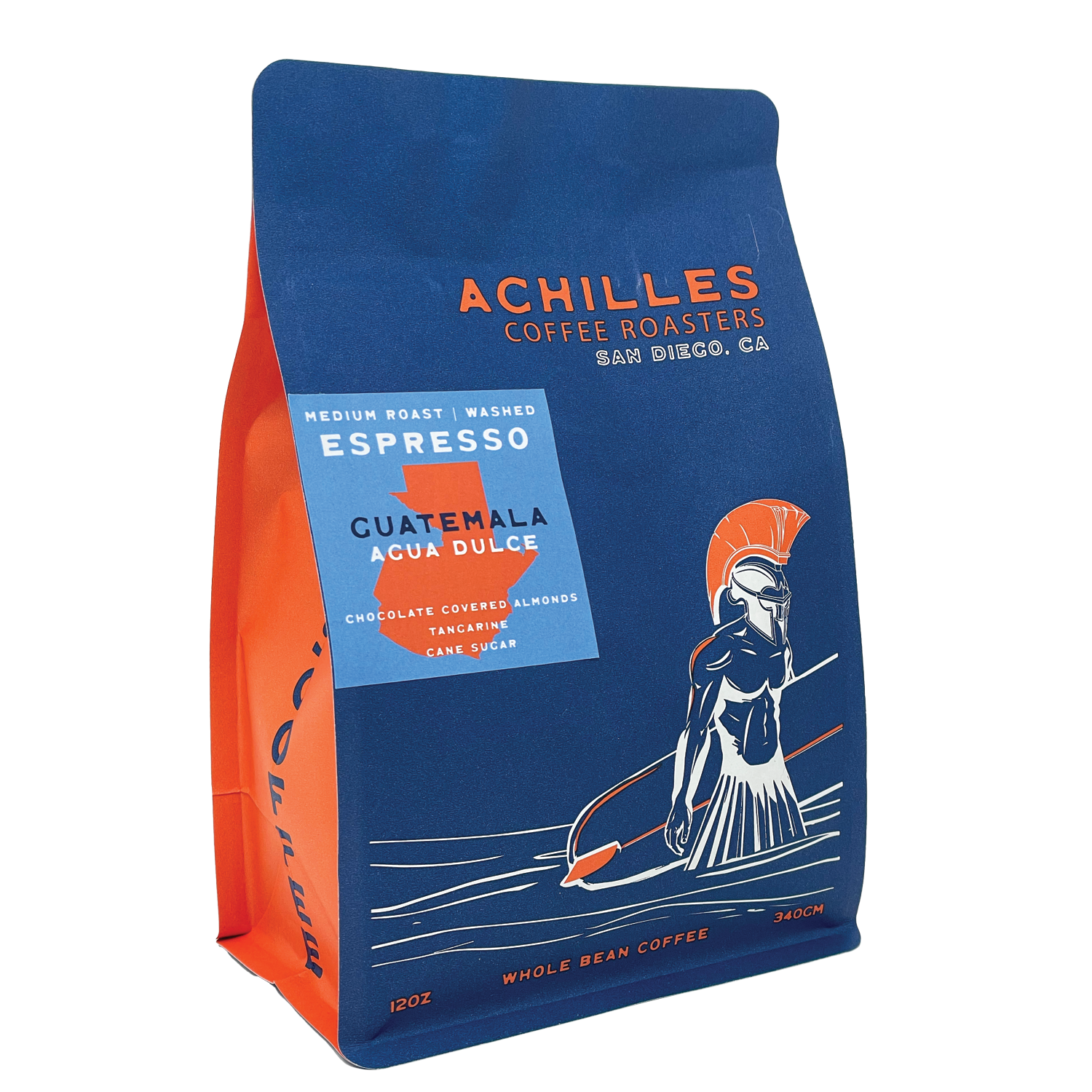Discovering the Origins Behind Premium SOE Single Origin Espresso
Discovering the Origins Behind Premium SOE Single Origin Espresso
Blog Article
Recognizing Coffee Beans: the Journey From Coffee to Blended Coffee Beans

The Beginnings of Coffee: An International Perspective
While you might assume of coffee as a modern-day staple, its origins map back centuries, intertwining with cultures across the world. The tale starts in Ethiopia, where legend says a goat herdsman named Kaldi uncovered the stimulating results of coffee beans after discovering his goats frolicking vigorously after consuming them.
As trade routes broadened, coffee made its method to Europe in the 17th century, swiftly acquiring appeal. Each society added its distinct twist to coffee prep work, enhancing its history.
Farming and Harvesting of Espresso Beans
As coffee's trip advanced, the emphasis moved to the growing and harvesting of specific bean selections, specifically those used for espresso. You'll find that espresso beans usually come from Arabica or Robusta plants, each offering unique flavors. The ideal expanding conditions consist of high altitudes and abundant, well-drained soil, which boost the beans' top quality.
During the harvest, picking techniques vary. Timing is essential; you desire to collect when the cherries reach peak ripeness for optimum taste.
As soon as collected, the beans are gotten ready for processing, which is essential in establishing their last taste. Comprehending the growing and collecting processes gives you insight into what enters into your preferred coffee, enhancing your gratitude for each and every cup.
Handling Approaches: From Cherry to Bean
Since you have actually discovered harvesting coffee beans, let's check out just how those cherries change right into the coffee beans you love. You'll see exactly how various harvesting techniques influence taste, followed by the essential actions of fermentation and drying out. We'll break down the milling and grading process that determines your coffee's high quality.
Harvesting Strategies Explained
When it comes to coffee, understanding harvesting techniques is vital, since they directly affect the taste and top quality of the beans you enjoy. Selective picking involves hand-picking only ripe cherries, guaranteeing you obtain the ideal high quality beans. Eventually, the option of harvesting strategy can considerably influence your coffee experience, so it's worth understanding how those beans made it to your mug.
Fermentation and Drying Out
After gathering, the next actions in handling coffee beans play a significant function in shaping their taste. You'll find that fermentation is crucial, as it assists break down the mucilage surrounding the beans, improving their taste account. Relying on the technique, this procedure can last from a few hours to numerous days, with varying results based on temperature level and humidity.
Once fermentation is complete, drying complies with, which is similarly vital. You can select from mechanical or sun-drying drying approaches. Sun-drying permits the beans to absorb flavors from the environment, while mechanical drying out assurances consistent dampness degrees despite weather condition. Appropriate drying out is necessary to avoid mold and mildew and maintain the beans' top quality, eventually influencing your cup of coffee.
Milling and Grading Refine
As fermentation and drying out set the phase for taste advancement, the milling and grading procedure warranties that only the very best coffee beans make it to your cup. This phase includes removing the outer layers of the coffee cherry, consisting of the parchment and husk. After milling, the beans are arranged by size and weight, making sure an uniform high quality. You'll find that grading assists determine problems and classify beans, which impacts flavor and fragrance. High-grade beans obtain a higher quality, resulting in a richer coffee experience. Once graded, the beans await packaging and shipping, maintaining their one-of-a-kind attributes. This precise process is crucial for supplying the remarkable preference you enjoy in every sip of your preferred brew.
Toasting Methods: Opening Flavor Possible
When you roast coffee beans, the approach you choose can significantly affect the taste profile. Understanding the relationship between time, temperature, and toasting methods is crucial to exposing the potential of your brew. Allow's check out how these aspects come with each other to create the ideal mug.
Roasting Methods Clarified
While you might think that all coffee roasting approaches yield the same outcomes, the reality is that each method discloses distinct taste potentials in the beans. You can pick between methods like drum toasting, air roasting, or even typical frying pan roasting. Drum toasting utilizes a turning drum to evenly disperse warm, enhancing caramelization and producing a well balanced flavor. Air roasting, on the other hand, circulates warm air around the beans, advertising a lighter roast with noticable acidity. Frying pan roasting permits for hands-on control but calls for continuous focus to stay clear of burning. Each technique has its subtleties, so try out different methods can assist you uncover the excellent roast that lines up with your taste choices. Appreciate the journey of locating your ideal cup!

Effect On Flavor Account
Different toasting techniques not just influence the process however also greatly impact the taste profile of the coffee beans. Dark roasts, on the other hand, bring out vibrant, great smoky flavors, often masking the bean's special characteristics. Comprehending these subtleties assists you value the virtuosity behind your mug of coffee, improving your total experience with every sip.
Time and Temperature Level Aspects
To release the complete taste potential of coffee beans, both time and temperature during the roasting procedure play significant duties. When toasting, you'll find that higher temperatures can swiftly create flavors, however if you rush it, you could wind up with charred notes. On the other hand, lower temperature levels permit for an extra steady taste growth, showcasing the beans' distinct qualities.

Timing is equally as important; extending the roast as well long can cause a loss of level of acidity and brightness, while too short a roast may leave the beans underdeveloped. Discovering that pleasant area calls for method and experimentation. By changing these aspects, you can reveal the rich, complicated flavors concealed within each bean, creating a really remarkable coffee experience.
The Art of Blending: Crafting One-of-a-kind Coffee Accounts

Start by picking a base coffee that gives a solid structure. Choose corresponding beans to boost details flavor notes. An intense Ethiopian bean can bring fruitiness, while a rich Brazilian coffee includes body. Testing is key-- don't be afraid to change ratios up until you discover your ideal account.
As you blend, bear in mind that each combination narrates. You're not just making coffee; you're creating an experience. Take your time, taste often, and enjoy the trip of discovering your signature mix - Single Origin Espresso.
Brewing Techniques: How Prep Work Affects Flavor
Blending coffee opens up a domain of flavor possibilities, however just how you make that blend can substantially affect your final mug. On the other hand, Single Origin Espresso a pour-over highlights the coffee's clearness and brightness, perfect for showcasing delicate notes.
Coffee, with its high stress, creates a focused shot that emphasizes sweet taste and crema. If you choose a lighter mixture, consider a cold mixture method; it yields a smooth, much less acidic taste.
Eventually, experimentation is vital. Readjusting variables like water temperature, grind dimension, and make time can transform your coffee's profile. So, embrace the art of developing to uncover the tastes hidden in your coffee blends. The right method can elevate your experience to brand-new heights.
The Future of Coffee: Sustainability and Advancement
As the coffee industry progresses, sustainability and development are becoming vital for dealing with environmental obstacles and conference consumer needs. You'll observe that more coffee companies are adopting environmentally friendly methods, from sourcing beans fairly to implementing lasting farming strategies. These shifts not only assist the earth however likewise enhance the high quality of the coffee you take pleasure in.
You could see developments like biodegradable product packaging and water-saving brewing approaches that minimize waste. Advanced technology, such as blockchain, is likewise becoming popular, guaranteeing transparency in the supply chain, which permits you to map your coffee back to its beginnings.
Furthermore, buying local areas and sustaining farmers through fair trade initiatives promotes a much more sustainable coffee ecological community. As you sip your following mug, keep in mind that your choices can contribute to a brighter future for coffee. By going with lasting brands, you're not just enjoying a beverage; you're making a positive impact on the world.
Frequently Asked Questions
What Is the Distinction In Between Arabica and Robusta Beans?
Arabica beans are smoother, sweeter, and have a higher acidity, while robusta beans are more powerful, much more bitter, and consist of more caffeine. When brewing your coffee., you'll notice these differences in taste and fragrance.
How Does Altitude Affect Coffee Bean Flavor?
Altitude influences coffee bean flavor considerably. Higher elevations create beans with brighter acidity and facility flavors, while lower elevations usually generate beans that are larger and much less nuanced. You'll observe these distinctions in your cup!
What Are the Health Perks of Alcohol Consumption Coffee?
Consuming coffee can boost your energy, improve psychological focus, and even improve physical efficiency. It's rich in antioxidants, may lower the threat of certain illness, and can advertise a healthier metabolic process when consumed in small amounts.
Can Coffee Beans Be Recycled for Brewing?
Yes, you can recycle coffee beans for brewing, however the taste may be weak. If you appreciate experimenting, try recycling them in various means, like cool mixtures or contributing to healthy smoothies for an added kick.
Just how Should I Store Coffee Beans for Quality?
To maintain your coffee beans fresh, save them in an impermeable container in a trendy, dark area. Stay clear of revealing them to heat, wetness, or light, as these aspects can quickly deteriorate their taste and scent.
Understanding Coffee Beans: the Journey From Espresso to Blended Coffee Beans.
Currently that you have actually found out regarding harvesting espresso beans, let's check out how those cherries transform right into the coffee beans you enjoy.When you roast coffee beans, the approach you select can dramatically affect the flavor account - Single Origin Espresso.While you might assume that all coffee roasting techniques generate the very same outcomes, the truth is that each strategy exposes special flavor potentials in the beans.Different toasting techniques not only affect the procedure but also considerably influence the flavor profile of the coffee beans
Report this page